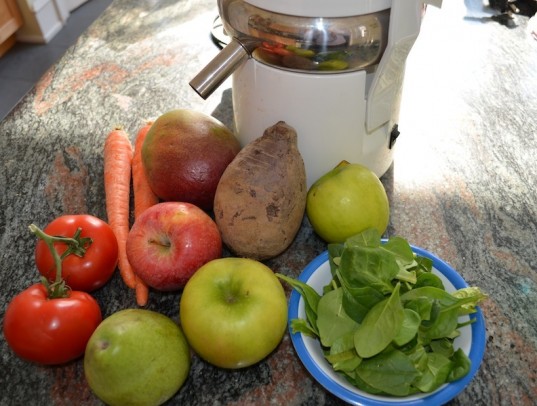Improve Your Training with a Healthier Diet
If you visit the dieting and nutrition section at your local bookstore, chances are you’ll see a variety of books about juice dieting and juice cleansing. Though the idea of blending fruits and vegetables into nutrient-dense smoothies has been around for a while – Bruce Lee famously included homemade juices into his overall diet – juicing has only recently earned widespread exposure thanks to its appearance in dieting books, internet articles, and documentaries like Fat, Sick, and Nearly Dead.
Nutrition
Though many of the claims and supposed benefits of juicing have yet to be backed up by scientific research, juicing offers a number of advantages when included as part of a healthy diet.
- Consume more fruits and veggies all at once – If
 you make the choice to eat a healthier, more balanced diet, it can be challenging at first to increase the amount and variety of fruits and veggies you eat every day. But juicing allows you to consume several servings of fruits and veggies in a single meal, more than you might when you have to prepare them or eat them raw.
you make the choice to eat a healthier, more balanced diet, it can be challenging at first to increase the amount and variety of fruits and veggies you eat every day. But juicing allows you to consume several servings of fruits and veggies in a single meal, more than you might when you have to prepare them or eat them raw. - Preserve enzymes – The process of heating and cooking can destroy many of the enzymes found in vegetables that are crucial in aiding digestion. Juicing preserves these enzymes, and since you’re consuming only two types of food at a time, digestion is speedier.
- Ease and efficiency – If you’re like most people, you don’t have the time or inclination to make salads for every meal. But juicing provides a quick and easy way to get your recommended servings of fruits and veggies, and the possible combinations and recipes are endless.
With these benefits in mind, it’s important to remember that juicing also has its downsides. Juicing, after all, is just another form of food processing; through chopping and blending your fruits and veggies, you’ll lose some of the vitamins and minerals found in fruit skins, and you’ll also lose some of the fiber these foods contain in their unprocessed form. Some juices can also be surprisingly high in calories and sugar content if the recipe uses too much fruit and not enough vegetables.
Tips for Better Juicing
It may not be the magical cure-all that many of its supporters claim it to be, but when done right, juicing can still provide you with the same health benefits gained from a diet high in fruits and vegetables. Just keep these few tips in mind when making your next juice concoction:
- High-end juicers aren’t necessary – Juicers can be expensive, and for an appliance that only does one thing, they take up a lot of valuable kitchen space. Fortunately, a regular blender should be able to meet all your juicing needs, and will retain more of the juice pulp that contains valuable fiber, vitamins and minerals.
- Add more than just fruit and veggies – Most juice recipes call for just fruit and vegetables, but feel free to include ingredients like milk, peanut butter, and yogurt to add some protein to your juice.
- Use juices as a snack, not a diet replacement – As great as homemade juices can be for your health, they won’t provide you with all your dietary needs. Eating a balanced combination of protein, carbohydrates, and fats from a variety of sources (meats, whole grains, lentils, fruits and veggies, etc.) is still the best method for achieving weight loss, a healthy body, and healthy mind. Use juices as a snack in between your larger meals throughout the day.
Related Links



